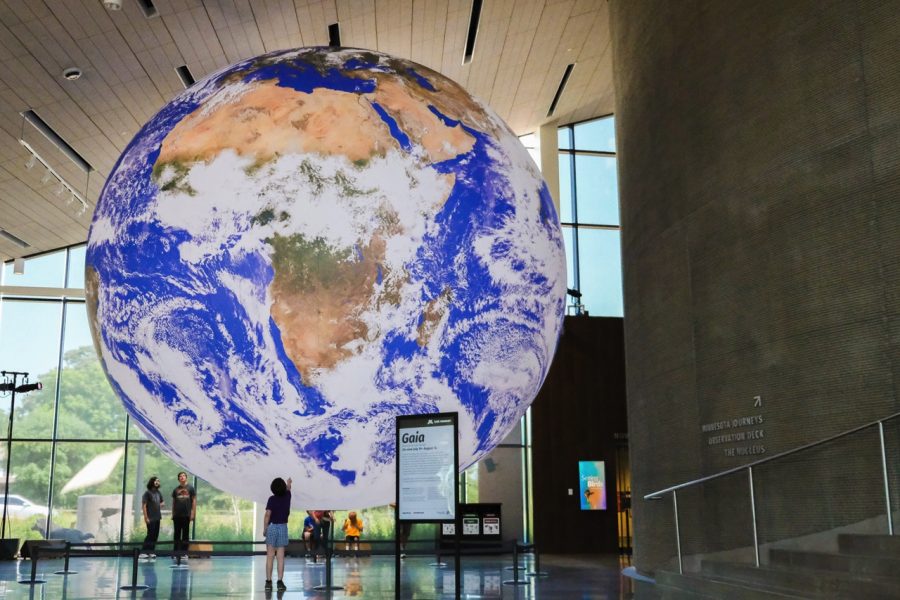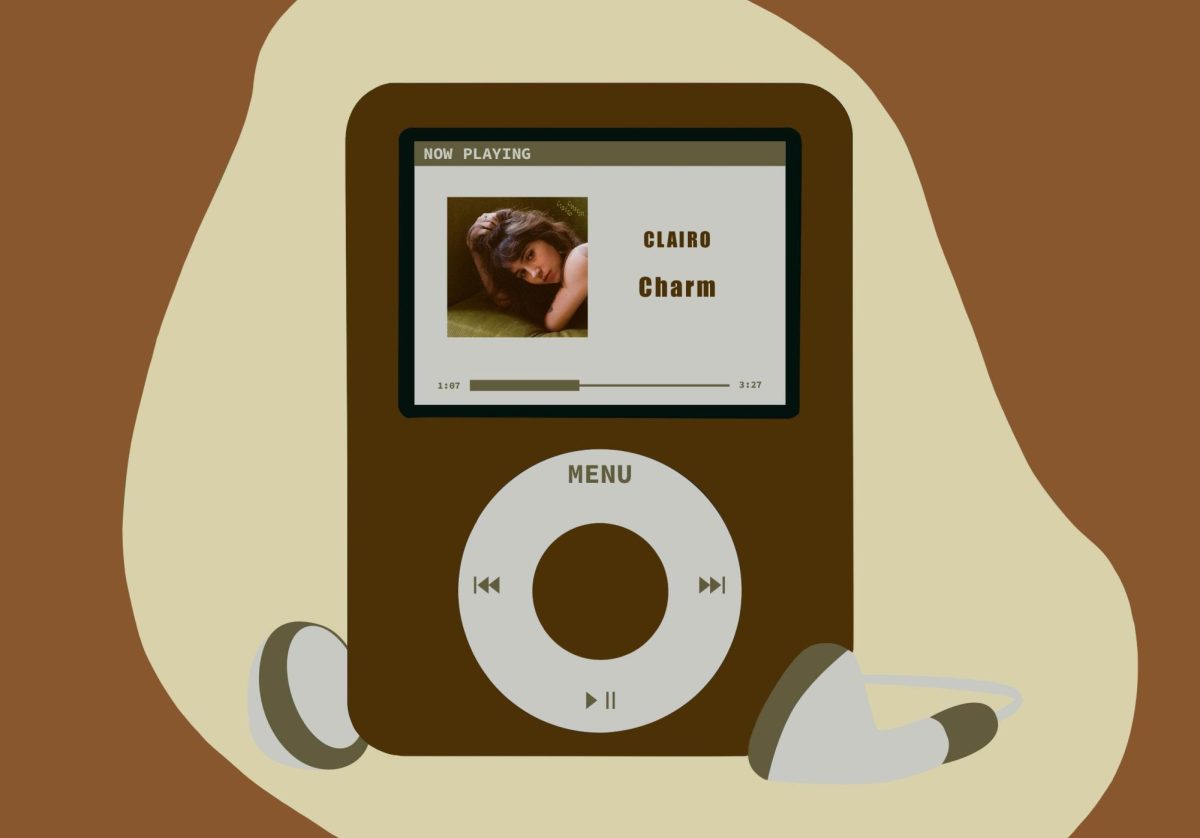On Tuesday, July 19, the Bell Museum welcomed a traveling installation, “Gaia,” as a part of the museum’s 150th anniversary lineup.
“Gaia,” which measures 23 feet in diameter, is an inflatable and internally lit replication of the Earth designed by U.K. artist Luke Jerram. Now hanging from the ceiling of Horizon Hall at the museum, “Gaia” welcomes visitors and draws the attention of drivers on Larpenteur Avenue.
About 1.8 million times smaller than the Earth’s actual size, Jerram created “Gaia” to help visitors experience the overview effect, which is the change in the perception and psychology of astronauts as they look down at our planet during their flights into space. Visitors are able to walk the 360 degree circumference as ambient music by composer Dan Jones plays, sprinkled with children talking about climate change and the lonely beeps of a space shuttle over an ethereal track.
“The closest thing we get to seeing what astronauts see is maybe by scrolling on Google Earth,” Holly Menninger, the Bell’s director of public engagement and science learning, said. “‘Gaia’ helps them recognize how precious and fragile our planet is.”
The Bell and Jerram first became connected in 2019 when the museum showcased his installation “The Museum of the Moon” to commemorate the 50th anniversary of the Apollo 11 moon landing.
Primarily being shown in Europe, the Bell is the first museum in the Upper Midwest to host “Gaia,” Menninger said.
Continuing his pattern of planetary installations, Jerram created “Gaia” to give visitors a more in-depth understanding of the urgency needed to combat the climate crisis.
This summer especially has exhibited the dangerously-high temperatures and abnormally frequent natural disasters associated with the climate crisis.
“It [‘Gaia’] makes me realize how small I am. I’m worried about the way it is going to change over time,” Emily Wagner, an exhibit visitor, said as she gazed up at the massive globe.
On opening day, Menninger overheard a child talking to their mom, asking where the lines of the countries were on the globe.
“To take the time to recognize the Earth as a whole when there’s so much conflict and strife on the planet, and to have that moment of connection and unity with the rest of the world, I think is really important,” said Menninger.
For better viewing of “Gaia,” the Bell is extending its hours on Thursdays to 10 p.m., offering an opportunity for visitors to see the museum after dark. On Aug. 4, there will be a nighttime telescope showing from 9 p.m. to 10 p.m. in the Bell’s Big Rivers Garden.
Along with the installation, the Bell’s planetarium is offering a specialized planetarium show, “Atlas of a Changing Earth.” It shows visitors how global warming is impacting the Earth, using imaging from space that shows melting glaciers and shrinking coastlines among other crises.
After its stay at the Bell, “Gaia” will continue its journey through showings at churches, museums and in outdoor spaces around the world. As for now, it will be at the Bell through Aug. 14.

















